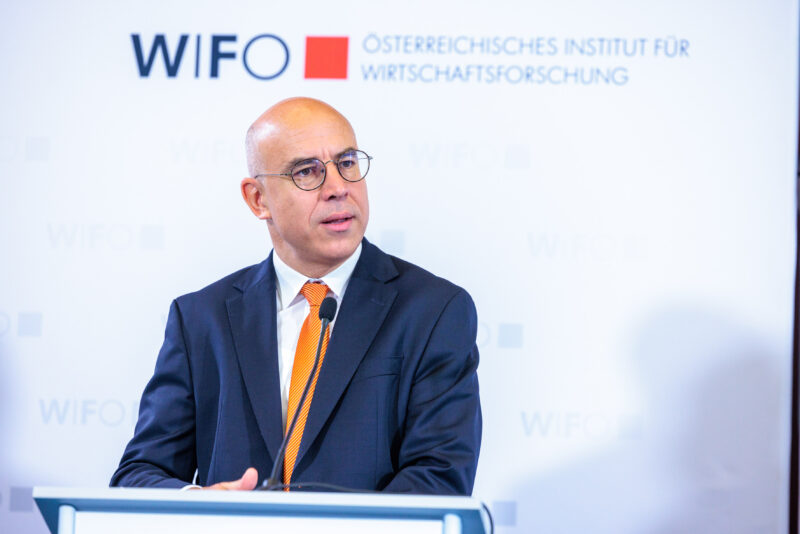
High Uncertainty Keeps Austria's Economy in Stagnation
"The economy in 2024 will be characterised by a dichotomy: an expansion in market-related services will be offset by a continuing recession in the producing sector", says Christian Glocker, one of the authors of the current WIFO Economic Outlook.
The Austrian economy has been in a weak phase since the end of the second quarter of 2022. Expansionary impulses from both domestic and foreign sources are lacking. Sluggish domestic and export demand pushed manufacturing and construction into recession, while the unfavourable order situation combined with declining final demand and depressed sentiment dampened the willingness to invest.
Leading indicators do not point to an economic recovery in 2024 either – in some cases, they have even deteriorated again recently. There is much to suggest that the domestic economy will remain sluggish. An upward trend has already started among market-related service providers, which should be consolidated by a moderate recovery in private consumption. However, this is being counteracted by the ongoing recession in the manufacturing sector and construction. The domestic economic environment is therefore likely to remain vulnerable to setbacks. At the same time, however, there are no signs of a recession in the aggregate economy.
Against this background, Austria's GDP will stagnate in 2024. Manufacturing value added is not expected to increase again until 2025, as exports should also pick up in line with international demand. However, higher growth rates than in the euro area are not expected, especially as exporters are likely to lose market share over the forecast period due to the increasingly unfavourable price position in the competitive environment. The overall economy will therefore remain underutilised in 2025.
Inflation is expected to slow down significantly, especially in 2024, due to weak demand. In the previous year, the price of domestically produced goods and services rose by 7.8 percent (according to the GDP deflator); GDP inflation is expected to reach 4.3 percent in 2024 (2025 +2.6 percent). Assuming that there is no renewed price shock for imported energy, WIFO expects a similar trend for consumer prices (2024 +3.4 percent, 2025 +2.5 percent, after +7.8 percent in 2023; according to the CPI).
Given the economic slowdown, the labour market is proving robust. After +1.2 percent in 2023, active dependent employment will continue to grow over the forecast period (2024 +0.4 percent, 2025 +0.9 percent), driven primarily by the services sector. However, due to the strong expansion of the labour supply, unemployment will also continue to rise. The unemployment rate (according to the national definition) is expected to reach 6.9 percent in 2024 and to fall to 6.7 percent in 2025 (2023: 6.4 percent).
Despite the more favourable economic outlook for 2025, the public finances will not improve over the forecast horizon. The general government budget balance is projected to deteriorate from ‑2.6 percent of GDP in 2023 to ‑3.2 and ‑3.1 percent respectively, thus exceeding the Maastricht target in both forecast years.
















